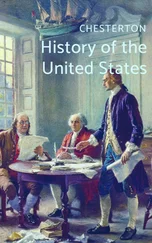In the early hours of 2 August 1930 the R100 moored at Montreal, having been in the air for seventy-four hours. On 16 August it was back in England, where Thomson congratulated the crew on accomplishing ‘this first and successful step in the development of our new generation of British airships’. It never flew again.
Meanwhile, the other great hope of British aviation was being sliced in half in its hangar. The surgical intervention was being performed to lengthen the R101 from 732 feet to 777 feet by adding a further section so that an additional gas bag could be inserted, covered, in the days before plastic, with the stretched intestines of bullocks imported from the great Chicago meatpacking factories. This was being done to give the R101 more lift: as it was, it would only have been able to carry a load of thirty-five tons; the long journey to India required twenty-five tons of fuel, leaving only an impossible ten tons for passengers, crew, luggage and stores. Already everything that could be lightened had been, and what looked like solid oak pillars were in fact balsa wood covered with a paper veneer. But it had been decided that with only weeks to go before the epic flight, drastic action had to be taken.
By 25 September the operation had been completed and the two halves of the airship sewn together again, but bad weather prevented further tests, and it was not until the early hours of 1 October that the R101 was finally ‘walked out’ of its hangar, some two hundred men (including a number of the unemployed from nearby Bedford) pulling the vast dirigible out of its glove-tight housing with ropes and mooring it to the Eiffel-tower-like structure to which it was attached ready for flight. Already twenty men, the ‘gassing and mooring party’, had left for Karachi to prepare for the R101’s arrival in India. If Thomson was to meet his timetable, it was essential that the airship set off as soon as possible. It has been alleged that Thomson’s impatience overrode proper safety concerns for the R101, although the airship’s principal biographer strenuously disputes this. Indeed, on the day of its departure for the subcontinent, Thomson insisted to Wing Commander Colmore, Director of Airship Development at Cardington, ‘You must not allow your judgment to be swayed by my natural anxiety to get off quickly.’
There were other considerations: six weeks earlier, on August Bank Holiday, the twenty-six-year-old Amy Johnson, daughter of a fish-shop owner from Hull, had arrived at Croydon airport in pouring rain after a nineteen-day solo round trip to Australia, via India. She too had received a warm welcome from the Secretary of State for Air, who nevertheless must have reflected on the contrast between Miss Johnson’s pioneering achievement and the fact that although nearly £2.5 million had been spent on the airship development programme since 1924, and questions were being asked in Parliament about such expenditure at a time of intense economic depression, so far there did not seem a great deal to show for it.
Despite the fact that the R101 had never flown in bad weather, and had not flown for even an hour at full speed in any conditions, a Certificate of Airworthiness was issued, and on 4 October 1930, the last day of British Summer Time, the R101 was ready to take off on a ‘demonstration flight’ of 2,235 nautical miles to Ismalia in Egypt, and then on to Karachi.
At 6.15 that evening the ministerial Daimler drew up on the Cardington airfield and the Secretary of State for Air got out. Earlier that day biscuits had been decanted from tins into paper bags to save weight; Lord Thomson’s luggage, which included cabin trunks, suitcases, two cases of champagne, a dress sword weighing three pounds and a Persian carpet weighing 129 pounds to be laid for the state dinners planned for Ismalia and Karachi, amounted to 1,207 pounds. The total weight of the passengers and all their luggage was supposed to be 2,508 pounds.
The mighty silver airship, the largest in the world, with fifty-four people aboard including six passengers, slipped its moorings at 6.36 p.m. in poor weather and steered for London, where it cruised at no more than eight hundred feet above the city, its lights blazing. The practices and uniforms aboard the R101 were, as befitted the name airship, naval, but those not required for watch duty or other chores headed for the spacious dining room, where six tables had been laid with white linen and gleaming silverware presented in a gesture of civic pride by the town of Bedford. After a good dinner (for the grandees, or bread and cheese and pickles washed down with cocoa for the crew) most of the passengers retreated to the comfortable wicker chairs in the metal-lined fireproof smoking lounge for a final cigar and a brandy. Given the highly explosive nature of the gas in the airbags, no smoking (or matches) was permitted anywhere else on board. They then trooped out onto the viewing balconies on either side of the lounge, where they caught a glimpse of the mouth of the river Somme, which had such terrible redolence for most of their generation, before retiring to their cabins for the night.
At 2.07 a.m. French time, approaching the Beauvais Ridge, already well known to aviators for its notorious gusting winds, the R101, which had been flying at around 1,200 feet at fifty knots, rolling and pitching through turbulent wind and rain which had not been anticipated, suddenly nosedived towards the ground. At 2.09 it crashed into dense woods near the hamlet of Allone. The crash ignited leaking hydrogen, and flames immediately engulfed the airship, lighting up the countryside around. Forty-six perished, including Lord Thomson and his valet; Sir Sefton Brancker, Director of Civil Aviation; the Director and assistant Directors of Airship Development; the R101’s captain, navigator, engineers, petty officers, charge hands and other members of the crew. Eight managed to scramble free, but of those two died of their injuries.
Virginia Woolf watched the funeral procession of the ‘heroes’ of the R101 on 11 October — but was not impressed.
The fifty coffins have just trundled by, lorries spread rather skimpily with Union Jacks — an unbecoming pall — & stuck about with red & yellow wreaths … the crowd smells; the sun makes it all too like birthday cake & crackers; & the coffins conceal too much. One bone, one charred hand wd. have done what no ceremony can do … why ‘heroes’? A shifty & unpleasant man, Lord Thomson by all accounts, goes for a joy ride with other notables, & has the misfortune to be burnt at Beauvais … we have every reason to say Good God how very painful — how very unlucky — but why all the shops in Oxford Street and Southampton Row shd. display black dresses only & run up black bars; why people should line the streets & parade through Westminster Hall, why every paper should be filled with nobility & lamentations & praise, why the Germans should muffle their wireless & the French ordain a day of mourning & the footballers stop for two minutes silence — beats me & Leonard …
The inquiry into the disaster, which reported in March 1931, while admiring the ‘skill, courage, and devotion’ of all those involved in the flight, decided that the immediate cause of the crash was a sudden loss of gas in one of the gasbags at the moment that the nose of the airship was being depressed by a very strong wind. This was probably due to the ‘ripping of the fore part of the envelope’ (the doped canvas outer covering), which had torn at precisely the place where it had been patched rather than replaced after an earlier mishap, so the wind got in and split open the already punctured front gasbag. In addition the watch had just changed, and the new men on duty had not yet had time to get the ‘feel’ of the ship. But the conclusion was less contingent:
Читать дальше












